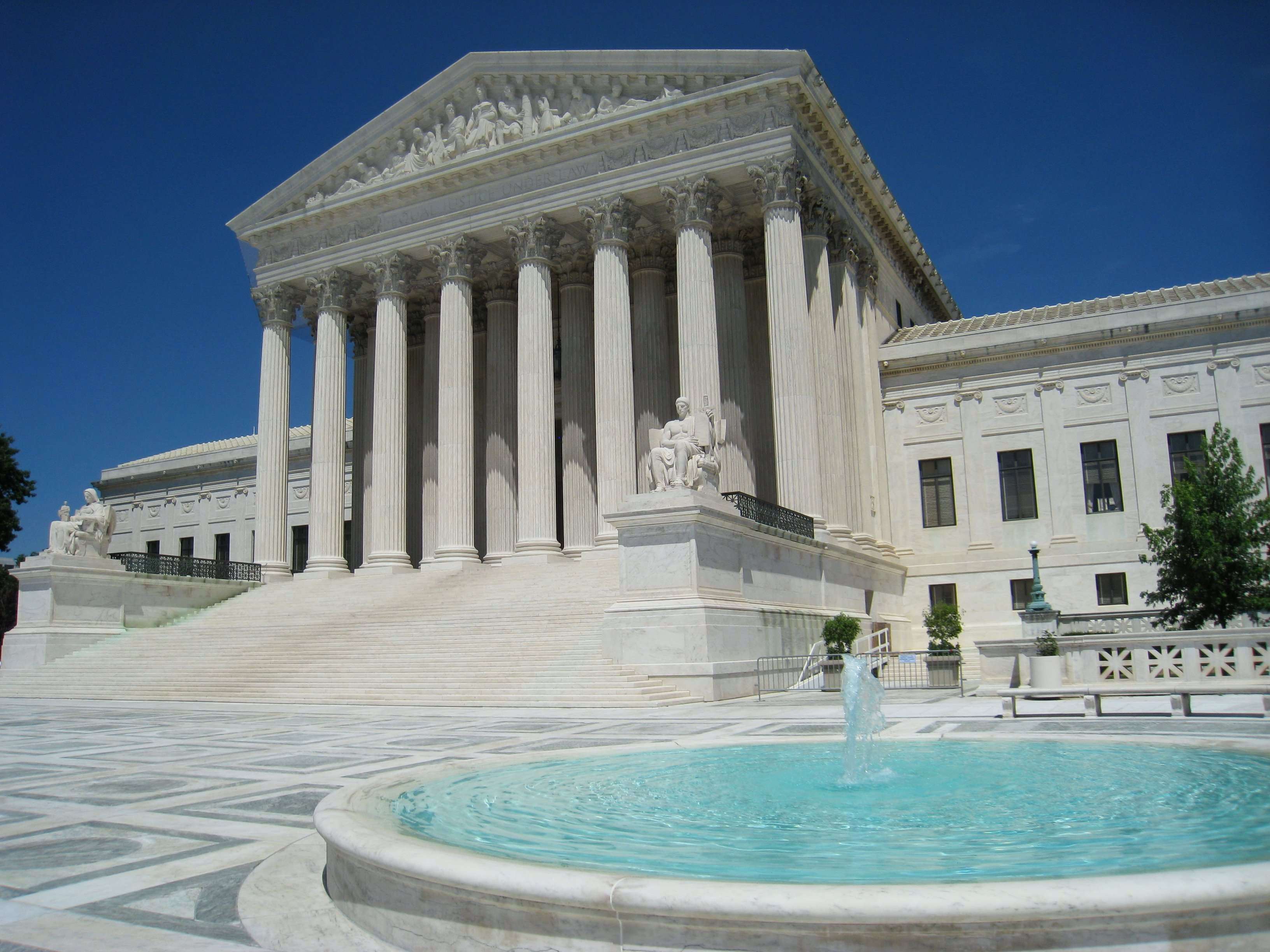Supreme Court Plaza Is a Free Speech–Free Zone

When taxes aren't taxes and private property isn't private, it's nice when free speech is free—or at least somewhat free. But while the Supreme Court has been relatively good at upholding free speech rights lately, those rights apparently don't extend to the plaza in front of the courthouse itself. The New York Times reports:
That vast and inviting space, with its benches and fountains, seems better suited to public debate than a military funeral or the sidewalk outside an abortion clinic. But the court insists on banning free speech on the plaza. Court police officers have been known to instruct visitors to remove small buttons bearing political messages.
The ban in question decrees it unlawful "to parade, stand, or move in processions or assemblages" or "to display…any flag, banner, or device" that might bring attention to a group on the grounds of the Supreme Court. A federal judge struck down the policy last year, finding the law an unconstitutional restriction of free speech:
The case involves Harold H. Hodge Jr., a student from Maryland who was arrested on the plaza in 2011. His crime was wearing a sign that read, "U.S. Gov. Allows Police to Illegally Murder and Brutalize African Americans and Hispanic People."
Jeffrey Light, the plaintiff's lawyer, argues that "the plaza part is a public forum and it's an absolute ban on First Amendment. The way it is now, even tourists with messages on their T-shirts could be arrested."
Hodge isn't the only one who has been harassed for political speech. A woman holding a sign with the exact text of the First Amendment has also been threatened with arrest.
But the marshal of the Supreme Court, Pamela "Shh, No Talking" Talkin, is fighting the ruling tooth and nail in an appeals court. According to her lawyers, there ain't no such thing as free speech in a marble plaza:
The Supreme Court addressed the law in 1983, in United States v. Grace, ruling that it could not be applied to demonstrations on the public sidewalks around the court. Since then, the sidewalks…have been regularly used for protests of all kinds. But the First Amendment vanishes when concrete turns to marble, Justice Department lawyers representing Ms. Talkin told the appeals court.
Talkin's brief cited the possibility that "demonstrations outside courthouses might give rise to actual or apparent efforts to subject judicial officers to improper influence." Supreme Court justices are apparently as delicate and impressionable as college students these days. The worry about "improper influence" also unreasonably assumes that our justices aren't already influenced by things other than the letter of the law.
This might be a small battle in the larger free speech war. But it bodes ill for First Amendment fighters when the Supreme Court can't even consistently apply constitutional protections on its own doorstep.


Show Comments (18)